China and Covid19
Viral in China: “Research Confirms: Covid19 Made by American Company”
In backing up their claim that an American company made Covid-19, Chinese state media confused The Daily Mail and a British misinformation site.
Published
2 years agoon

One hashtag stating that an American company has created Covid19 was top trending on Weibo this week. The trending topic and related media reports are triggering more anti-Americanism online, although there are also many netizens who are blaming Chinese official media for publishing misinformation.
Over the past two days, the hashtag “Research Confirms: The Novel Coronavirus Was Made by an American Company” (#研究证实新冠病毒是美国公司制造#) has been trending on Weibo. The topic became big after an article by the news blogging account Tao Wen (韬闻) circulated on WeChat and was also republished by Chinese state outlets Global Times (环球网) and China Daily (中国日报).
The article first claims that the Russian army recently found evidence that biological labs were set up in Ukraine to produce biological weapons and that the U.S. was using bats to study the coronavirus, before switching to the topic of Americans being responsible for creating Covid19. The article’s main source is The Exposé, a British blog that previously falsely claimed that Covid-19 vaccines cause ‘a form of AIDS’ or that ‘82% of pregnancies end in miscarriage’ after Covid vaccination.
Right now, the top trending topic on Weibo: Research confirms that #COVID19 was created by a U.S. company. State-affiliated Huanqiu posted an article that cites The Daily Expose, a UK conspiracy theory blog, as a source, whose claims were debunked by fact-checkers. @WhatsOnWeibo pic.twitter.com/L8ghhja2tA
— Chu Yang (@ChuYang_Journ) March 24, 2022
Both The Exposé and the Chinese article link back to a story published by The Daily Mail on March 3 of 2022 about the Covid virus containing a tiny chunk of DNA that allegedly matches the sequence patented by pharmaceutical company Moderna in 2016.
These articles all focus on a study that was first published in February by Ambati et al (2022) in Frontiers in Virology relating to the genetic makeup of SARS-Cov-2, which caused the COVID-19 pandemic. According to this study, there is a small portion (a 19-nucleotide sequence in a 30,000-nucleotides long genome) of the SARS-CoV-2 genome that shows a 100% reverse match in a proprietary sequence found in a United States patent that was filed on Feb. 4, 2016, under patent number 9,587,003. This leads back to a patent by ModernaTX, Inc. (US) that was filed for the purpose of the production of oncology-related proteins and peptides (link).
The study writes that “the reverse complement sequence present in SARS-CoV-2 may occur randomly but other possibilities must be considered,” with the authors describing the findings “highly unusual” and calling for “further investigations.”
In The Daily Mail, Professor Lawrence Young, a virologist at Warwick University, responded to the study. Although he called it “interesting,” he also said that “sometimes these things happen fortuitously, sometimes it’s the result of convergent evolution (when organisms evolve independently to have similar traits to adapt to their environment).” He also commented that the findings do not contribute to the debate about whether Covid was engineered, adding: “I wouldn’t call it a smoking gun because it’s too small.”
According to the lengthy post published by The Exposé, an anonymous ‘concerned reader’ analyzes the study by Ambati et al and not only draws the conclusion that there is “100% biochemi proof that Covid19 was man made,” but also that evidence “100% confirms Moderna created Covid19.” These claims were also repeated in the article published by Global Times and China Daily on March 23, emphasizing that ‘British media’ published these findings and that even the media in Western countries are standing up against the U.S. government. The article writes that this ‘British media’ outlet is “The Daily Mail” (“每日邮报”), while sharing screenshots from the post by the questionable blog The Exposé.
“A clickbait article by an exaggerating blogger, but it still becomes a hot topic and everyone believes it”
The origins of Covid19 have been a political issue ever since early 2020 when speculation was first raised that the novel coronavirus may have emerged from a laboratory in Wuhan. A statement in The Lancet published in February of 2020 condemned any rumors on the virus origins, claiming that scientific research “overwhelmingly” concludes that Covid19 originated in wildlife, and peer-reviewed research from late 2021 further supported the theory that Covid19 originated at the seafood and wildlife market in Wuhan and did not come from a lab.
Chinese officials have repeatedly denied a possible leak from a Chinese laboratory and have emphasized their cooperation with international efforts to find the origins of the pandemic. In May of 2021, the Chinese Foreign Ministry stated that the U.S. was actually not genuinely interested in the scientific origin of the virus, but that its search for the origins of the novel coronavirus was merely about “political manipulation” and “blame-shifting” (read more here).
Nearly ten months later, however, it seems that Chinese officials are also starting to point more fingers and that state media outlets are mixing up science and speculation when it comes to presenting the latest research into the genetic makeup of SARS-Cov-2. Chinese media are also combining news stories related to speculations about the American responsibility for the pandemic and the supposed presence of American bio-labs in Ukraine, presenting them in a singular context (for example in this Weibo post).
These updated media narratives on the American role in the Ukraine conflict and the global Covid19 crisis add fuel to existing anti-American sentiments on Chinese social media.
“The world would be better off without the U.S.”, a typical comment says. “This is proof that the U.S. is the world’s tumor. We’ll only reach world peace once it collapses.”

“This makes me feel sick,” another commenter wrote, posting a (North Korean) anti-American propaganda poster. One other Weibo user (@elo_不太正常) posted a photoshopped image of the Statue of Liberty wearing a ‘corona’ crown and holding up a lethal potion.

At the same time, there are also many Chinese social media users who are pointing out that the “Research Confirms: The Novel Coronavirus Was Made by an American Company” hashtag and recent Chinese media reports have conflated some speculation with scientific facts, and have confused the British misinformation site The Exposé with the The Daily Mail (the URL of the first is ‘dailyexpose.uk’ while the latter is ‘dailymail.co.uk’).
Others also express worry about how fast disinformation can circulate online, especially when it is republished by the official media, which they also criticize: “The same media censoring news about the chained woman are now sensationalizing this news,” some say (for more on the chained woman, see here).

“Straightaway, you could see this was a clickbait article by a blogger who is exaggerating, but it still becomes a hot topic and everyone firmly believes it immediately,” one Weibo user writes, with another person saying: “Why is state media always forwarding other people’s writing?”
“Although the U.S. manipulates a lot, this media source is not one with authority, it has insufficient credibility,” other commenters write, as well as: “Is this source trustworthy? Please don’t incite feelings,” “This is just sensationalism.”
To read more about Covid19 and China, see our articles here.
To read more about ongoing tensions between China and the U.S., click here.
By Manya Koetse
References (other sources hyperlinked within text)
The Expose [‘by a concerned reader’]. 2022. “BREAKING: Official Biochemical and Statistical Evidence 100% confirms Moderna created Covid-19.” The Exposé, March 3 https://dailyexpose.uk/2022/03/03/evidence-confirms-moderna-created-covid-19/ [March 25, 2022].
Boyd, Connor. 2022. “Scientists claim Covid virus contains tiny chunk of DNA that ‘matches sequence patented by Moderna THREE YEARS before pandemic began.'” MailOnline, February 23 https://www.dailymail.co.uk/news/article-10542309/Fresh-lab-leak-fears-study-finds-genetic-code-Covids-spike-protein-linked-Moderna-patent.html [March 25, 2022].
Ambati BK, Varshney A, Lundstrom K, Palú G, Uhal BD, Uversky VN and Brufsky AM (2022) MSH3 Homology and Potential Recombination Link to SARS-CoV-2 Furin Cleavage Site. Front. Virol. 2:834808. doi: 10.3389/fviro.2022.834808
Spotted a mistake or want to add something? Please let us know in comments below or email us. First-time commenters, please be patient – we will have to manually approve your comment before it appears.
©2022 Whatsonweibo. All rights reserved. Do not reproduce our content without permission – you can contact us at info@whatsonweibo.com.
Manya Koetse is the founder and editor-in-chief of whatsonweibo.com. She is a writer, public speaker, and researcher (Sinologist, MPhil) on social trends, digital developments, and new media in an ever-changing China, with a focus on Chinese society, pop culture, and gender issues. She shares her love for hotpot on hotpotambassador.com. Contact at manya@whatsonweibo.com, or follow on Twitter.

China and Covid19
Sick Kids, Worried Parents, Overcrowded Hospitals: China’s Peak Flu Season on the Way
“Besides Mycoplasma infections, cases include influenza, Covid-19, Norovirus, and Adenovirus. Heading straight to the hospital could mean entering a cesspool of viruses.”
Published
8 months agoon
November 22, 2023
In the early morning of November 21, parents are already queuing up at Xi’an Children’s Hospital with their sons and daughters. It’s not even the line for a doctor’s appointment, but rather for the removal of IV needles.
The scene was captured in a recent video, only one among many videos and images that have been making their rounds on Chinese social media these days (#凌晨的儿童医院拔针也要排队#).
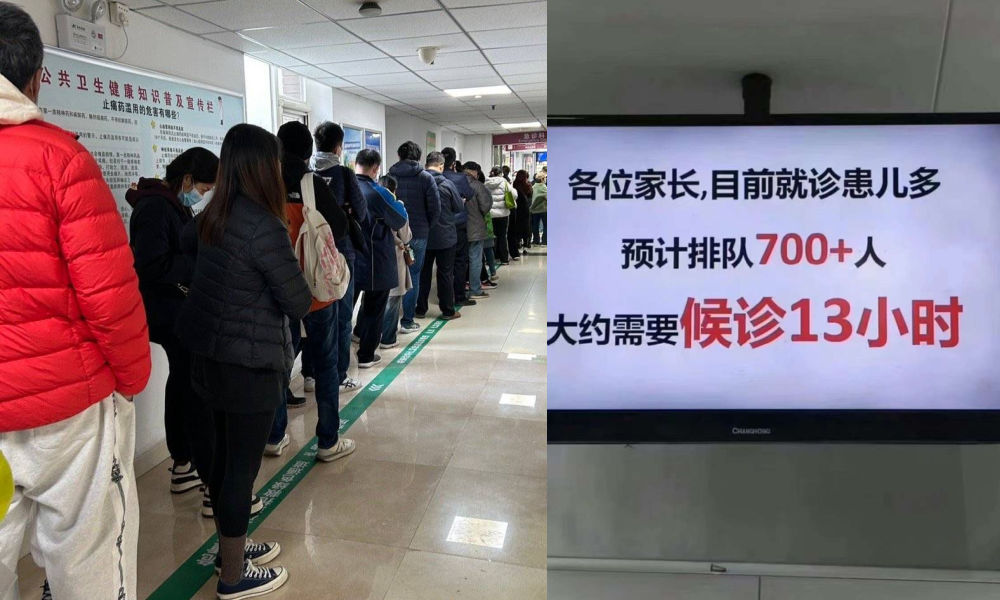
One photo shows a bulletin board at a local hospital warning parents that over 700 patients are waiting in line, estimating a waiting time of more than 13 hours to see a doctor.
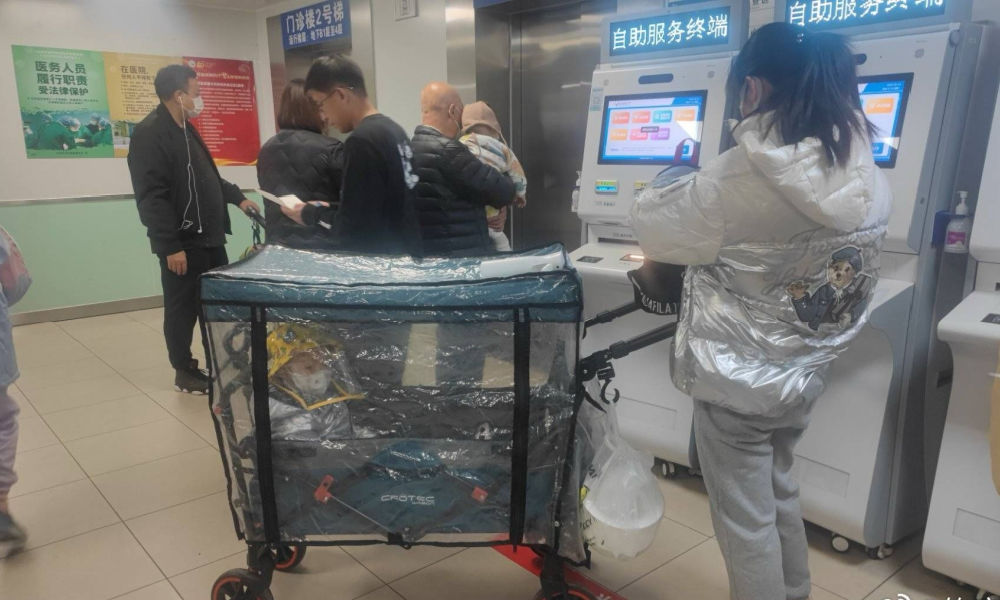
Another image shows children doing their homework while hooked up on an IV.

Recent discussions on Chinese social media platforms have highlighted a notable surge in flu cases. The ongoing flu season is particularly impacting children, with multiple viruses concurrently circulating and contributing to a high incidence of respiratory infections.
Among the prevalent respiratory infections affecting children are Mycoplasma pneumoniae infections, influenza, and Adenovirus infection.
The spike in flu cases has resulted in overcrowded children’s hospitals in Beijing and other Chinese cities. Parents sometimes have to wait in line for hours to get an appointment or pick up medication.
According to one reporter at Haibao News (海报新闻), there were so many patients at the Children’s Hospital of Capital Institute of Pediatrics (首都儿科研究所) on November 21st that the outpatient desk stopped accepting new patients by the afternoon. Meanwhile, 628 people were waiting in line to see a doctor at the emergency department.
Reflecting on the past few years, the current flu season marks China’s first ‘normal’ flu peak season since the outbreak of Covid-19 in late 2019 / early 2020 and the end of its stringent zero-Covid policies in December 2022. Compared to many other countries, wearing masks was also commonplace for much longer following the relaxation of Covid policies.
Hu Xijin, the well-known political commentator, noted on Weibo that this year’s flu season seems to be far worse than that of the years before. He also shared that his own granddaughter was suffering from a 40 degrees fever.
“We’re all running a fever in our home. But I didn’t dare to go to the hospital today, although I want my child to go to the hospital tomorrow. I heard waiting times are up to five hours now,” one Weibo user wrote.
“Half of the kids in my child’s class are sick now. The hospital is overflowing with people,” another person commented.
One mother described how her 7-year-old child had been running a fever for eight days already. Seeking medical attention on the first day, the initial diagnosis was a cold. As the fever persisted, daily visits to the hospital ensued, involving multiple hours for IV fluid administration.
While this account stems from a single Weibo post within a fever-advice community, it highlights a broader trend: many parents swiftly resort to hospital visits at the first signs of flu or fever. Several factors contribute to this, including a lack of General Practitioners in China, making hospitals the primary choice for medical consultations also in non-urgent cases.
There is also a strong belief in the efficacy of IV infusion therapy, whether fluid-based or containing medication, as the quickest path to recovery. Multiple factors contribute to the widespread and sometimes irrational use of IV infusions in China. Some clinics are profit-driven and see IV infusions as a way to make more money. Widespread expectations among Chinese patients that IV infusions will make them feel better also play a role, along with some physicians’ lacking knowledge of IV therapy or their uncertainty to distinguish bacterial from viral infections (read more here)
To prevent an overwhelming influx of patients to hospitals, Chinese state media, citing specialists, advise parents to seek medical attention at the hospital only for sick infants under three months old displaying clear signs of fever (with or without cough). For older children, it is recommended to consult a doctor if a high fever persists for 3 to 5 days or if there is a deterioration in respiratory symptoms. Children dealing with fever and (mild) respiratory symptoms can otherwise recover at home.
One Weibo blogger (@奶霸知道) warned parents that taking their child straight to the hospital on the first day of them getting sick could actually be a bad idea. They write:
“(..) pediatric departments are already packed with patients, and it’s not just Mycoplasma infections anymore. Cases include influenza, Covid-19, Norovirus, and Adenovirus. And then, of course, those with bad luck are cross-infected with multiple viruses at the same time, leading to endless cycles. Therefore, if your child experiences mild coughing or a slight fever, consider observing at home first. Heading straight to the hospital could mean entering a cesspool of viruses.”
The hashtag for “fever” saw over 350 million clicks on Weibo within one day on November 22.
Meanwhile, there are also other ongoing discussions on Weibo surrounding the current flu season. One topic revolves around whether children should continue doing their homework while receiving IV fluids in the hospital. Some hospitals have designated special desks and study areas for children.
Although some commenters commend the hospitals for being so considerate, others also remind the parents not to pressure their kids too much and to let them rest when they are not feeling well.
Opinions vary: although some on Chinese social media say it's very thoughtful for hospitals to set up areas where kids can study and read, others blame parents for pressuring their kids to do homework at the hospital instead of resting when not feeling well. pic.twitter.com/gnQD9tFW2c
— Manya Koetse (@manyapan) November 22, 2023
By Manya Koetse, with contributions from Miranda Barnes
Get the story behind the hashtag. Subscribe to What’s on Weibo here to receive our newsletter and get access to our latest articles:
Spotted a mistake or want to add something? Please let us know in comments below or email us. First-time commenters, please be patient – we will have to manually approve your comment before it appears.
©2023 Whatsonweibo. All rights reserved. Do not reproduce our content without permission – you can contact us at info@whatsonweibo.com.
China and Covid19
Repurposing China’s Abandoned Nucleic Acid Booths: 10 Innovative Transformations
Abandoned nucleic acid booths are getting a second life through these new initiatives.
Published
1 year agoon
May 19, 2023
During the pandemic, nucleic acid testing booths in Chinese cities were primarily focused on maintaining physical distance. Now, empty booths are being repurposed to bring people together, serving as new spaces to serve the community and promote social engagement.
Just months ago, nucleic acid testing booths were the most lively spots of some Chinese cities. During the 2022 Shanghai summer, for example, there were massive queues in front of the city’s nucleic acid booths, as people needed a negative PCR test no older than 72 hours for accessing public transport, going to work, or visiting markets and malls.
The word ‘hésuān tíng‘ (核酸亭), nucleic acid booth (also:核酸采样小屋), became a part of China’s pandemic lexicon, just like hésuān dìtú (核酸地图), the nucleic acid test map lauched in May 2022 that would show where you can get a nucleic test.
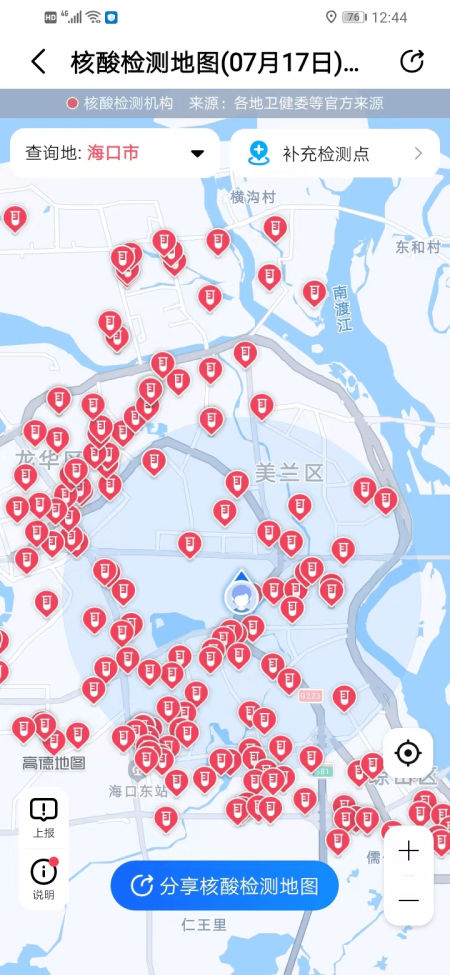
Example of nucleic acid test map.
During Halloween parties in Shanghai in 2022, some people even came dressed up as nucleic test booths – although local authorities could not appreciate the creative costume.
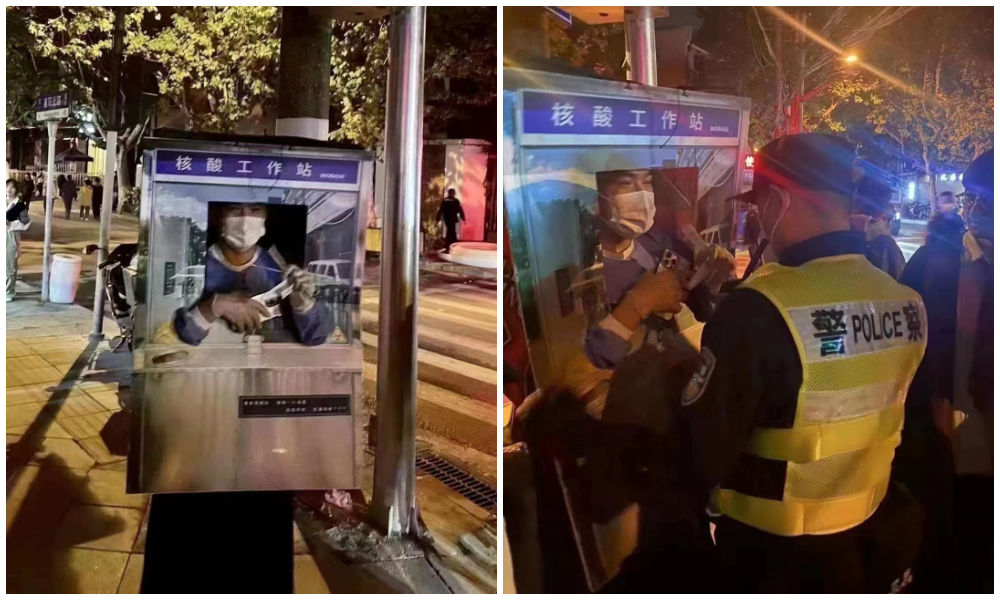
Halloween 2022: dressed up as nucliec acid booths. Via @manyapan twitter.
In December 2022, along with the announced changed rules in China’s ‘zero Covid’ approach, nucleic acid booths were suddenly left dismantled and empty.
With many cities spending millions to set up these booths in central locations, the question soon arose: what should they do with the abandoned booths?
This question also relates to who actually owns them, since the ownership is mixed. Some booths were purchased by authorities, others were bought by companies, and there are also local communities owning their own testing booths. Depending on the contracts and legal implications, not all booths are able to get a new function or be removed yet (Worker’s Daily).
In Tianjin, a total of 266 nucleic acid booths located in Jinghai District were listed for public acquisition earlier this month, and they were acquired for 4.78 million yuan (US$683.300) by a local food and beverage company which will transform the booths into convenience service points, selling snacks or providing other services.
Tianjin is not the only city where old nucleic acid testing booths are being repurposed. While some booths have been discarded, some companies and/or local governments – in cooperation with local communities – have demonstrated creativity by transforming the booths into new landmarks. Since the start of 2023, different cities and districts across China have already begun to repurpose testing booths. Here, we will explore ten different way in which China’s abandoned nucleic test booths get a second chance at a meaningful existence.
1: Pharmacy/Medical Booths
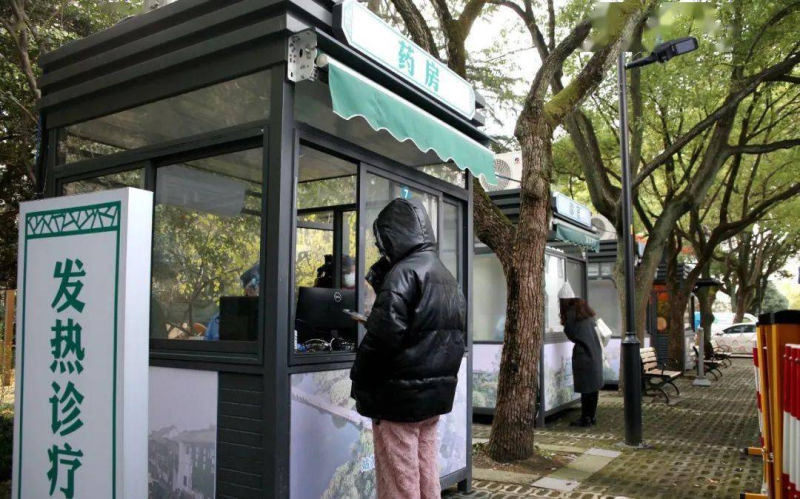
Via ‘copyquan’ republished on Sohu.
Blogger ‘copyquan’ recently explored various ways in which abandoned PCR testing points are being repurposed.
One way in which they are used is as small pharmacies or as medical service points for local residents (居民医疗点). Alleviating the strain on hospitals and pharmacies, this was one of the earliest ways in which the booths were repurposed back in December of 2022 and January of 2023.
Chongqing, Tianjin, and Suzhou were among earlier cities where some testing booths were transformed into convenient medical facilities.
2: Market Stalls
In Suzhou, Jiangsu province, the local government transformed vacant nucleic acid booths into market stalls for the Spring Festival in January 2022, offering them free of charge to businesses to sell local products, snacks, and traditional New Year goods.
The idea was not just meant as a way for small businesses to conveniently sell to local residents, it was also meant as a way to attract more shoppers and promote other businesses in the neighborhood.
3: Community Service Center
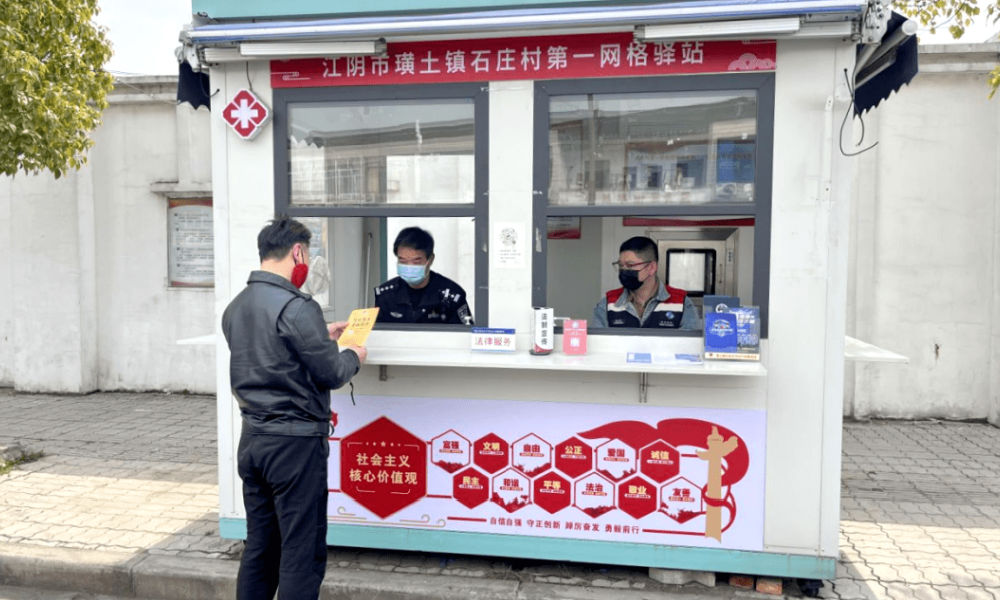
Small grid community center in Shizhuang Village, image via Sohu.
Some residential areas have transformed their local nucleic acid testing booths into community service centers, offering all kinds of convenient services to neighborhood residents.
These little station are called wǎnggé yìzhàn (网格驿站) or “grid service stations,” and they can serve as small community centers where residents can get various kinds of care and support.
4: “Refuel” Stations
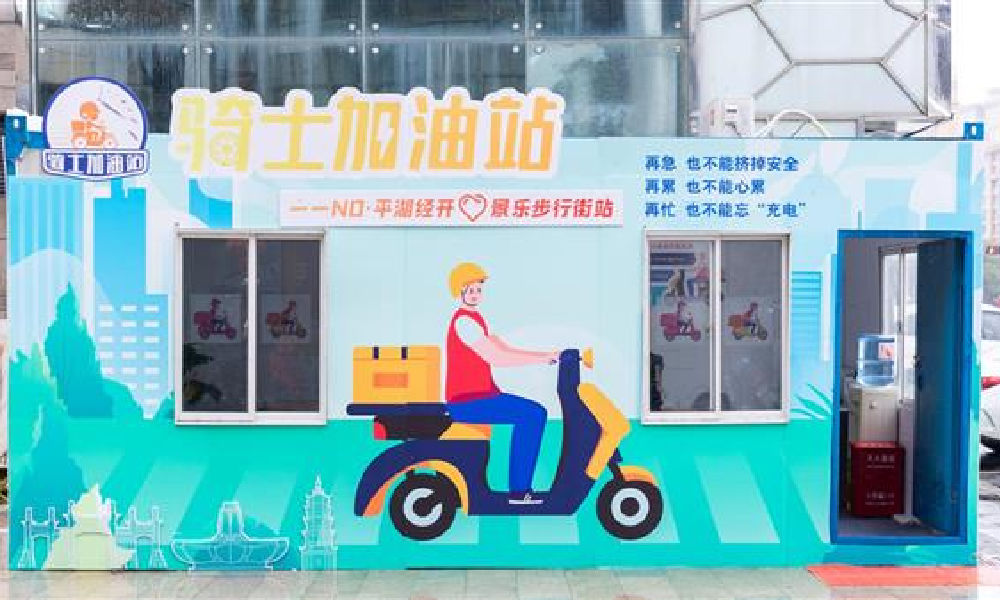
In February of this year, 100 idle nucleic acid sampling booths were transformed into so-called “Rider Refuel Stations” (骑士加油站) in Zhejiang’s Pinghu. Although it initially sounds like a place where delivery riders can fill up their fuel tanks, it is actually meant as a place where they themselves can recharge.
Delivery riders and other outdoor workers can come to the ‘refuel’ station to drink some water or tea, warm their hands, warm up some food and take a quick nap.
5: Free Libraries
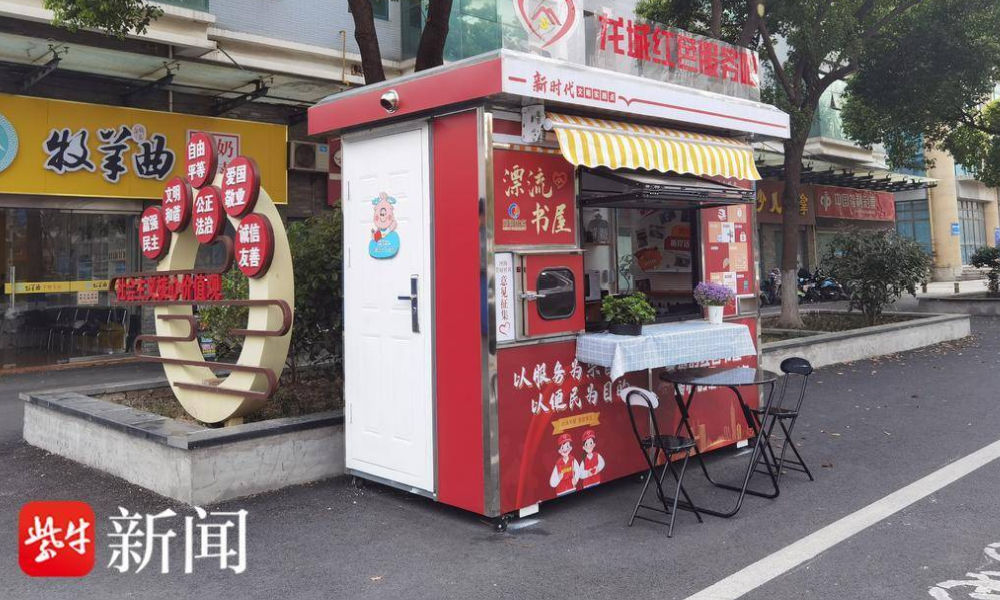
image via sohu.
In various Chinese cities, abandoned nucleic acid booths have been transformed into little free libraries where people can grab some books to read, donate or return other books, and sit down for some reading.
Changzhou is one of the places where you’ll find such “drifting bookstores” (漂流书屋) (see video), but similar initiatives have also been launched in other places, including Suzhou.
6: Study Space

Photos via Copyquan’s article on Sohu.
Another innovative way in which old testing points are being repurposed is by turning them into places where students can sit together to study. The so-called “Let’s Study Space” (一间习吧), fully airconditioned, are opened from 8 in the morning until 22:00 at night.
Students – or any citizens who would like a nice place to study – can make online reservations with their ID cards and scan a QR code to enter the study rooms.
There are currently ten study booths in Anji, and the popular project is an initiative by the Anji County Library in Zhejiang (see video).
7: Beer Kiosk

Hoegaarden beer shop, image via Creative Adquan.
Changing an old nucleic acid testing booth into a beer bar is a marketing initiative by the Shanghai McCann ad agency for the Belgium beer brand Hoegaarden.
The idea behind the bar is to celebrate a new spring after the pandemic. The ad agency has revamped a total of six formr nucleic acid booths into small Hoegaarden ‘beer gardens.’
8: Police Box
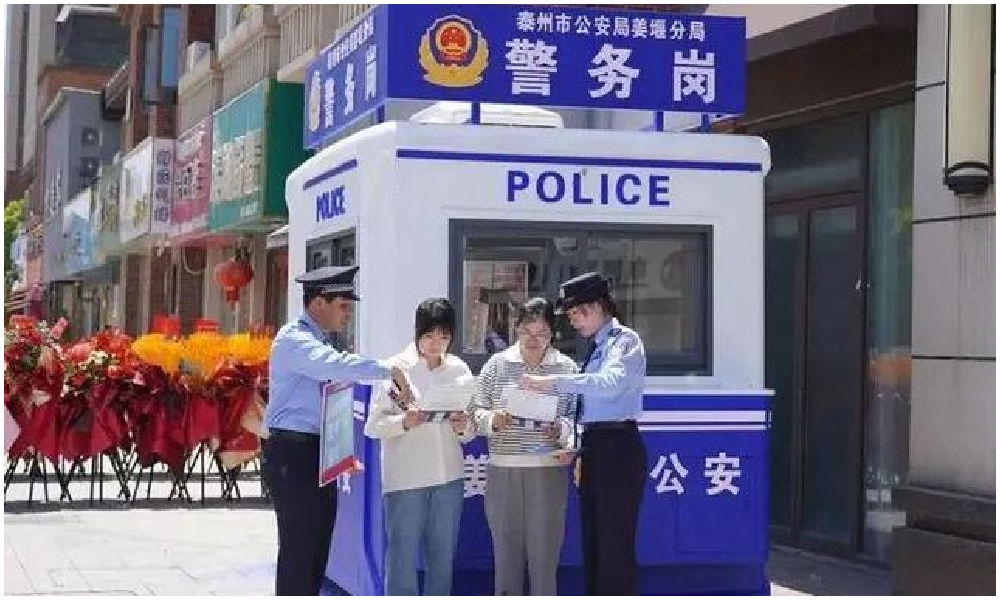
In Taizhou City, Jiangsu Province, authorities have repurposed old testing booths and transformed them into ‘police boxes’ (警务岗亭) to enhance security and improve the visibility of city police among the public.
Currently, a total of eight vacant nucleic acid booths have been renovated into modern police stations, serving as key points for police presence and interaction with the community.
9: Lottery Ticket Booths
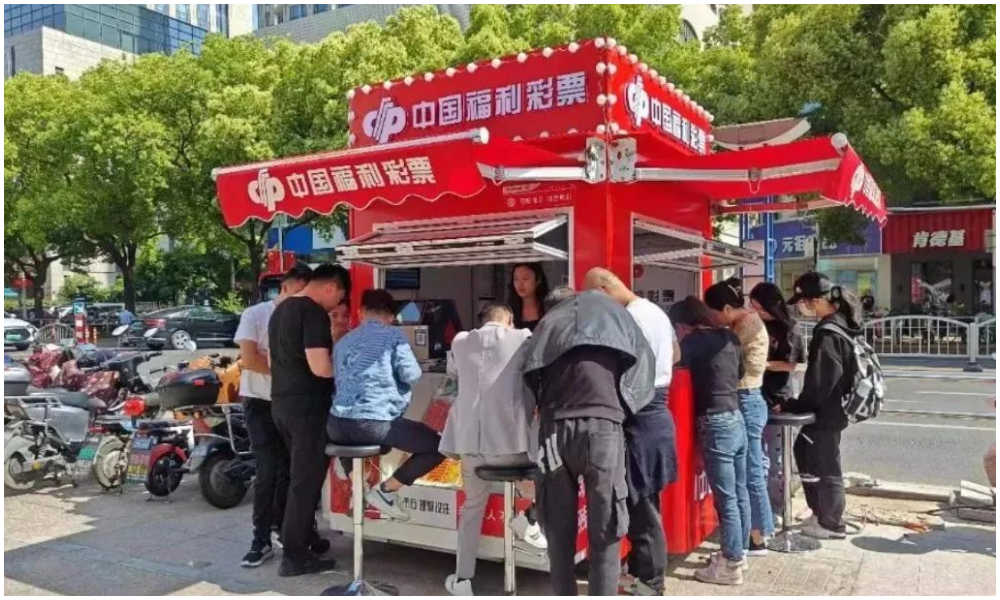
Image via The Paper
Some nucleic acid booths have now been turned into small shops selling lottery tickets for the China Welfare Lottery. One such place turning the kiosks into lottery shops is Songjiang in Shanghai.
Using the booths like this is a win-win situation: they are placed in central locations so it is more convenient for locals to get their lottery tickets, and on the other hand, the sales also help the community, as the profits are used for welfare projects, including care for the elderly.
10: Mini Fire Stations

Micro fire stations, images via ZjNews.
Some communities decided that it would be useful to repurpose the testing points and turn them into mini fire kiosks, just allowing enough space for the necessary equipment to quickly respond to fire emergencies.
Want to read more about the end of ‘zero Covid’ in China? Check our other articles here.
By Manya Koetse,
Get the story behind the hashtag. Subscribe to What’s on Weibo here to receive our newsletter and get access to our latest articles:
Spotted a mistake or want to add something? Please let us know in comments below or email us. First-time commenters, please be patient – we will have to manually approve your comment before it appears.
©2023 Whatsonweibo. All rights reserved. Do not reproduce our content without permission – you can contact us at info@whatsonweibo.com.
Subscribe

Weibo Watch: The Future is Here

“Bye Bye Biden”: Biden’s Many Nicknames in Chinese

Enjoying the ‘Sea’ in Beijing’s Ditan Park

A Triumph for “Comrade Trump”: Chinese Social Media Reactions to Trump Rally Shooting

Weibo Watch: Get Up, Stand Up

The Tragic Story of “Fat Cat”: How a Chinese Gamer’s Suicide Went Viral

“Old Bull Eating Young Grass”: 86-Year-Old Chinese Painter Fan Zeng Marries 36-Year-Old Xu Meng

A Brew of Controversy: Lu Xun and LELECHA’s ‘Smoky’ Oolong Tea

Singing Competition or Patriotic Fight? Hunan TV’s ‘Singer 2024’ Stirs Nationalistic Sentiments

Zara Dress Goes Viral in China for Resemblance to Haidilao Apron

Weibo Watch: The Battle for the Bottom Bed

About the “AI Chatbot Based on Xi Jinping” Story

China’s Intensified Social Media Propaganda: “Taiwan Must Return to Motherland”

Weibo Watch: Telling China’s Stories Wrong

Saying Goodbye to “Uncle Wang”: Wang Wenbin Becomes Chinese Ambassador to Cambodia
Get in touch
Would you like to become a contributor, or do you have any tips or suggestions? Get in touch here!
Popular Reads
-

 China Insight3 months ago
China Insight3 months agoThe Tragic Story of “Fat Cat”: How a Chinese Gamer’s Suicide Went Viral
-

 China Music4 months ago
China Music4 months agoThe Chinese Viral TikTok Song Explained (No, It’s Not About Samsung)
-

 China Digital10 months ago
China Digital10 months agoToo Sexy for Weibo? Online Discussions on the Concept of ‘Cābiān’
-

 China Arts & Entertainment12 months ago
China Arts & Entertainment12 months agoBehind 8 Billion Streams: Who is Dao Lang Cursing in the Chinese Hit Song ‘Luocha Kingdom’?




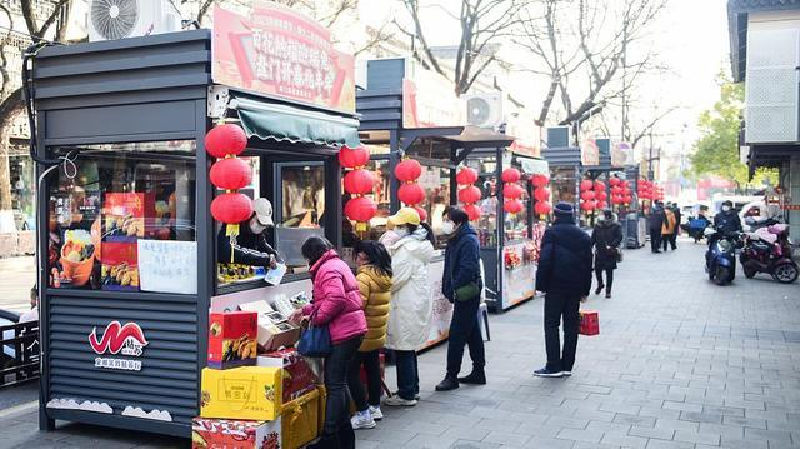

2L8
March 25, 2022 at 11:42 pm
Don’t matter. Global opinions were predetermined before Day 0 and will never change. Consider the history of HlV: forty years later and people still believe (a) hyumins got it from eating and sex0rs with monkeys. Fo0king L-O-L.